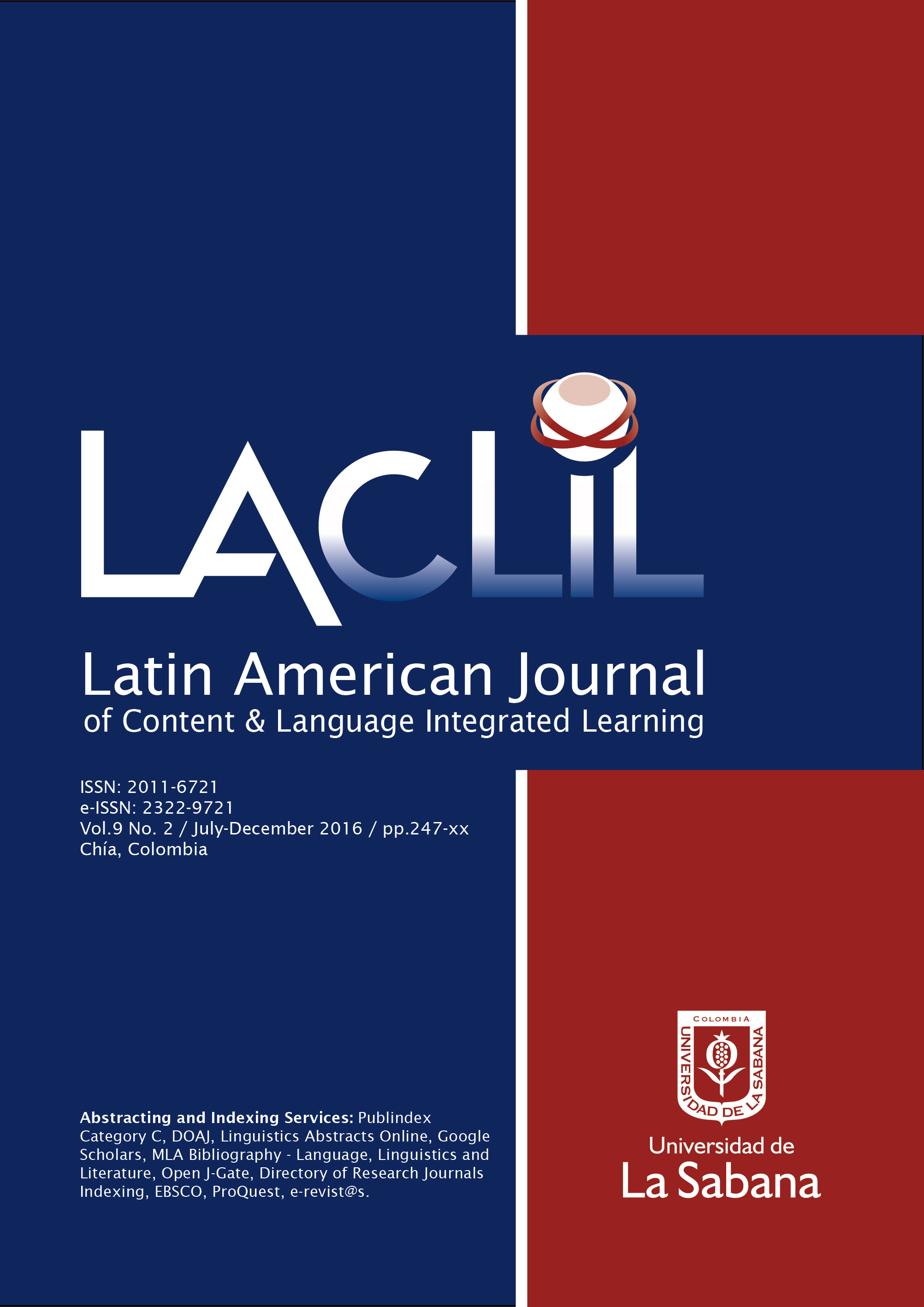The illusio of the foreign language standard in a Colombian university
DOI:
https://doi.org/10.5294/7189Keywords:
College, foreign language, needs analysis, program evaluation, standardsAbstract
The Ministry of education in Colombia set a policy for higher education in which graduates should achieve an intermediate proficiency level (B1) in another language; and by 2025 it expects that they leave college with an upper intermediate level (B2). This report deals with a private college that attempts to participate in the policy, yet the college has a requirement, not a foreign language policy. It offers their students 160 hours in which they hardly attain a high beginner level (A2). The Board of Directors of the college conducted a satisfaction survey that became
the first cycle of the action research study reported here. The sample of 624 EFL learners expressed dissatisfaction with the program and frustration with the approach and with the results. The situation mirrored what Bourdieu (1995) defines as the illusio, the belief that the “game” we collectively agree to play is worth playing, that the fiction we collectively elect to accredit constitutes reality. The authors conducted a second cycle to establish the source of dissatisfaction, and to identify the needs and wants of the stakeholders. The results indicate that the administrators expect that English reinforce disciplinary knowledge, while learners expect to learn to speak it, and teachers expect to teach grammar. A third cycle has been planned to propose a curriculum proposal that reconciles the allotments of resources of time, space, staff, content learning and language learning with a standard that meets the needs and expectations of the program. In other words we expect to make a proposal that corrects the collective misperception of reality
which constitutes a reality in itself.
Downloads
References
Alderson, J. C. and A. Beretta (1992). Evaluating second language education. Cambridge: Cambridge University Press.
Bourdieu, P. and L.Waqcuant, L. (1995). Respuestas: por una antropología reflexiva. México: Ed. Grijalbo.
Brindley, G. P. & Bagshaw (1984). Needs analysis and objective setting in the adult migrant Education Program. In D. Nunan. The learner- Centred Curriculum (pp. 151-153). Cambridge: Cambridge University Press.
Brown, J. D. (1989). Language program evaluation: a synthesis of existing possibilities. In R. K. Johnson (Ed.). The second language curriculum (pp. 222-241). Cambridge: Cambridge University Press.
Brown, J. D. (1995). The elements of language curriculum: A systematic approach to program Development. Boston, MA: Heinle & Heinle.
Castillo, R. (2012). Editorial introduction: A Reflection on the Role of Foreign Language Learning in today’s Education. Latin American Journal of Content and Language Integrated Learning, 5(2), iv-vii. doi:10.5294/laclil.2012.5.2.11
Cummins, J. (2008). BICS and CALP: Empirical and theoretical status of the distinction. Toronto: The College of Toronto.
Dictionary.com (2016). http://www.dictionary.com/
Hague, P and N. Hague (2016). Customer Satisfaction Surveys & Research: How to Measure CSAT. Retrieved February 1, 2016 from:
https://www.b2binternational.com/publications/customer-satisfaction-survey/
Hahta, K., G.Y Butler and D. Witt and. (2000). How long does it take English Learners to attain Proficiency? Retrieved January 4, 2016 from:http://www.usc.edu/dept/education/CMMR/FullText/Hakuta_HOW_LONG_DOES_IT_TAKE.pdf
Hargreaves, A. (1997). The four ages of professionalism and professional learning. Unicorn, 23, (2), 86 108.
Kish, L (1977). Weighting: why, when, and how? The College of Michigan, Ann Arbor MI P. 121-130. Retrieved May 9, 2015 from: https://www.amstat.org/sections/SRMS/Proceedings/papers/1990_018.pdf
Kvale, S. (1996) InterViews. Thousand Oaks California: Sage Publications.
Ministerio de Educación Nacional de Colombia (2014). Programa Nacional de Inglés: Colombia Very Well. Retrieved August 17, 2016 from: http://www.colombiaaprende.edu.co/html/micrositios/1752/articles-343287_recurso_1.pdf
Nunan, D. (1988). The learner-centered curriculum. Cambridge: Cambridge University Press.
O'Connor, H., & Gibson, N. (2003). A Step-by-Step Guide to Qualitative Data Analysis.
Pimatiziwin: A Journal of Aboriginal and Indigenous Community Health 1(1). Retrieved August 1. 2016 from: http://www.pimatisiwin.com/uploads/1289566991.pdf
Richards, C.J. (2013). Curriculum Approaches in Language Teaching: forward, central, and backward design. RELC Journal. 44(1) 5–33. Retrieved August 18. 2016 from:
Richards, J. (2001). Curriculum development in language teaching. Cambridge: Cambridge University Press.
Saylor J.G., W.M Alexander and A.J Lewis (1981). Curriculum planning for better teacher and learning. 4th Ed. New York: Holt Rinehart and Winston.
Witkin, J.W. and B.R. Altschuld (1995). Planning and conducting needs assessment. London: Sage Publications.
Downloads
Published
How to Cite
Issue
Section
License
This Journal and its articles are published under the Creative Commons CC BY 4.0 DEED Attribution 4.0 International license. You are free to: Share — copy and redistribute the material in any medium or format for any purpose, even commercially. Adapt — remix, transform, and build upon the material for any purpose, even commercially. The license cannot revoke these freedoms as long as you follow the terms of the license.








